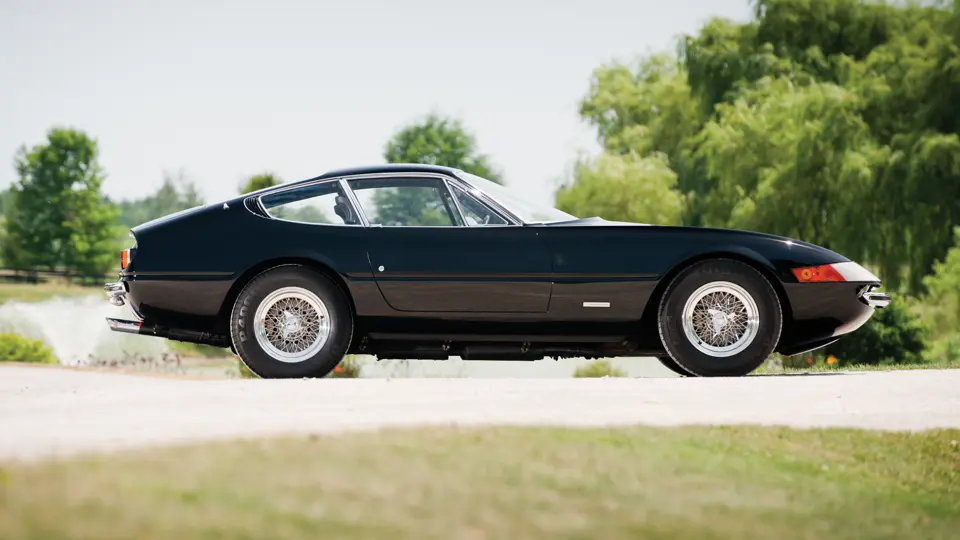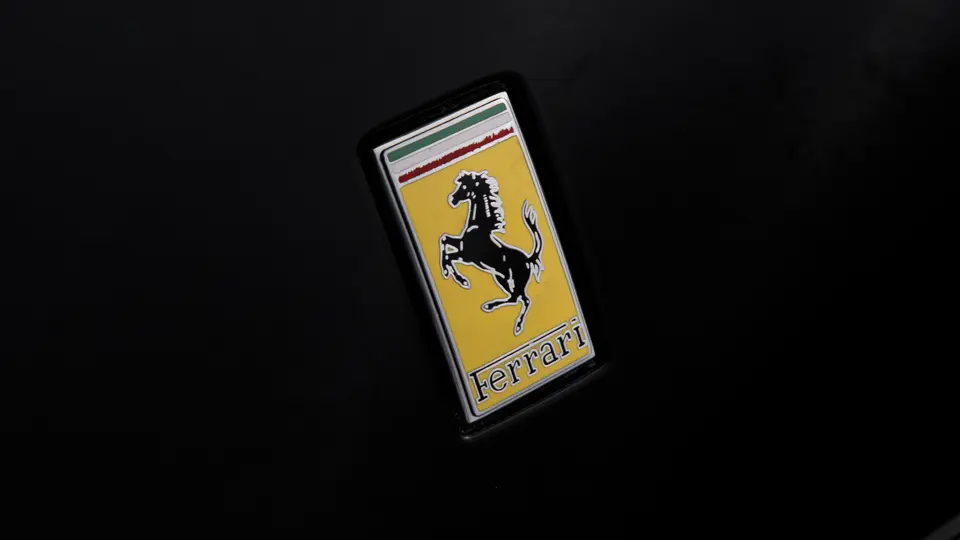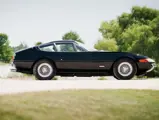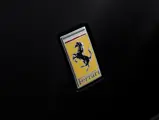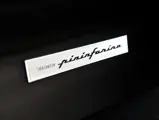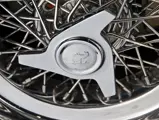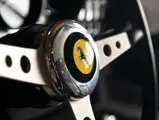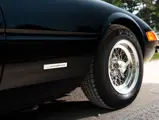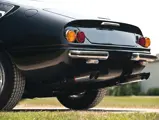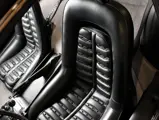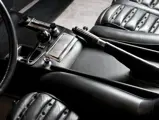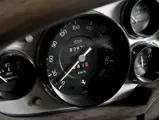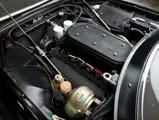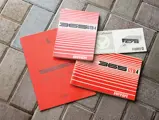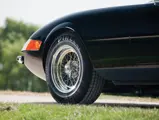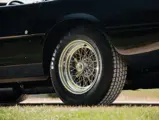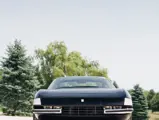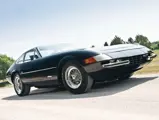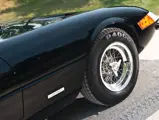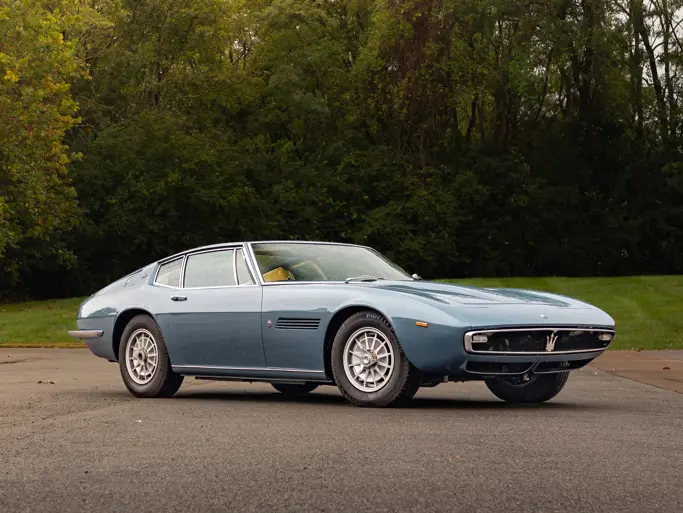352 hp, 4,390 cc DOHC V-12 engine, six Weber 40 DCN 17 carburetors, five-speed manual transaxle, independent front and rear suspension by coil springs and wishbones, and four-wheel hydraulic disc brakes. Wheelbase: 94.5"
• Rare Type A chassis; left-hand drive
• The world’s fastest production car upon introduction
Ferrari introduced, what most agree, was their finest GT car to date at the 1968 Paris Salon. Never officially called “Daytona,” the 365 GTB/4 offered a combination of enormous performance, stunning Pininfarina bodywork, and its place in history as the last front-engined Ferrari GT prior to Fiat involvement. Therefore, it occupies a special place in Maranello history. In recognition of the prancing horse’s stunning one-two-three victory at 1967's Daytona 24 Hours, the press unofficially conjured up the world famous Daytona name. Rumors persist that Ferrari was actually intending to name their new model as such, but for some reason, they never officially used this evocative title themselves.
The early cars had the headlights covered with a Perspex plastic band, which eventually gave way to the retracting headlamp set. The effortlessly long bonnet and chiseled nose, with the rakish cabin set well back, accentuated the front end. Both cockpit and wings lead seamlessly into the taught, muscular tail. But for a pair of engine vents carved into the hood, Pininfarina kept the Daytona free of ducts, louvers, and bumps. Its exceptionally clean profile undoubtedly minimized the effects of age. Inside, the cabin was just as impressive, wonderfully styled, and finished in the finest Connolly leather. Thin pillars ensured excellent visibility all-round. Complemented by a wood-rimmed steering wheel, leather-trimmed bucket seats, and electric windows, the new model won enormous praise.
It is easy to follow the visual transition between models. The Daytona was a stopgap model between Ferrari's outgoing 275 GTB/4 and their mid-engine 365 GT4 Berlinetta Boxer, the development of which was running well behind schedule. Furthermore, Ferrari was beginning to suffer a number of financial problems and decided to produce what was essentially an updated version of an existing model. However, despite the troubled background to its inception, Daytonas themselves were in no way affected, as Ferrari produced what became the definitive GT of its time.
The timeless design by Pininfarina was only a fraction of the model’s beauty. Power was provided by the Colombo-derived Tipo 251 V-12 engine, which displaced 4.4-liters and featured four overhead camshafts and six Weber twin-choke carburetors. Output stood at about 350 brake horsepower, sufficient for remarkable 0–100 km/h times of just 5.9 seconds and a reported top speed of 280 km/h (174 mph). Road & Track testers independently confirmed its breathtaking performance, and without a doubt, the Ferrari 365 GTB/4 distinguished itself as the world’s fastest production car. Production continued in both berlinetta and spyder forms until late-1973. The Daytona was discontinued in 1973, to make way for the overdue mid-engined 12-cylinder 365 GT4 Berlinetta Boxer. By this time, Ferrari had completed one thousand, two hundred, and eighty-four 365 GTB/4s.
The 1973 365 GTB/4 offered here, chassis 16339, is a left-hand drive example originally finished in Marrone Metallizzato 106-M-73 (brown metallic) with a Beige VM 3218 Connolly interior and delivered new to official French Ferrari importer, Charles Pozzi SA, Paris. The car was delivered with air conditioning and the rare stiffer Type A European chassis, as confirmed by the serial plate stamp. Recent history indicates prominent ownership and care.
In the mid-1980s, noted collector Vaile Shelton delivered the Ferrari to Bobileff Motorcar Company, of San Diego. It arrived in yellow livery with tan hides. A very thorough nut-and-bolt restoration commenced, which included updating the colors to black over black leather. The current staff at the restoration house recalls the process of discovering the original metallic brown beneath the layers of yellow and primer. No body damage or repairs were found. In 2001, the car was acquired by Mr. Truitt, of Carmel, California, another noteworthy Ferrari collector and event participant.
Today, this Daytona presents especially well, having been lovingly cared for by the current steward. It retains the black on black colors with grey carpets, and stylish Borrani wheels wrapped in Pirelli P4000 tires grace all four corners. The books, tools, and jack equipment have been retained. Ferrari expert mechanic Patrick Ottis, as well as the owner’s personal, full-time automobile mechanic, has performed servicing. The owner maintains a world-class iconic collection. He states that his 365 GTB/4 is not only a class winner at Concorso Italiano but also a beautiful driving car.
Although the Daytona was initially conceived as an interim model for the long-awaited 365 GT/4 Berlinetta Boxer, it was released as the fastest and, for legions of Ferrari enthusiasts, the most desirable car in the world. More than four decades after its debut, the 365 GTB/4 Daytona maintains its status among the sports car elite and is still one of the most capable GT cars Ferrari has ever produced.


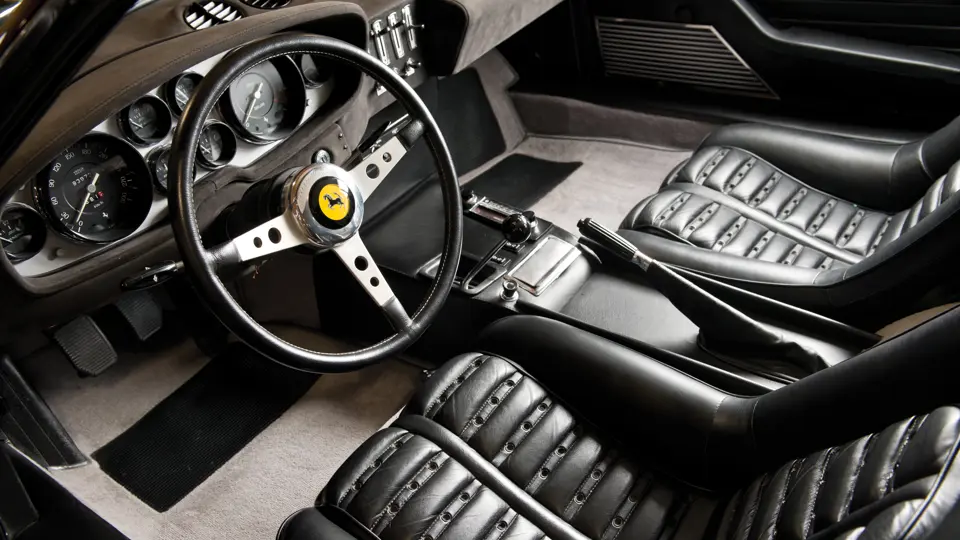

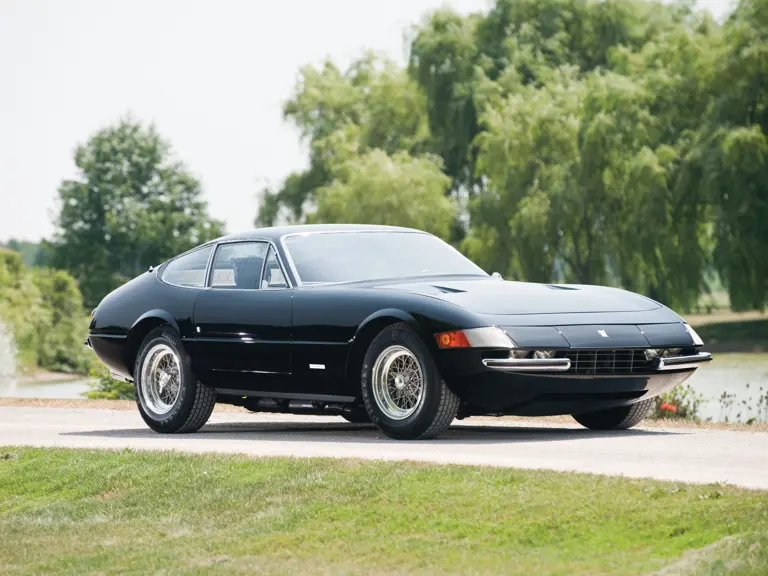
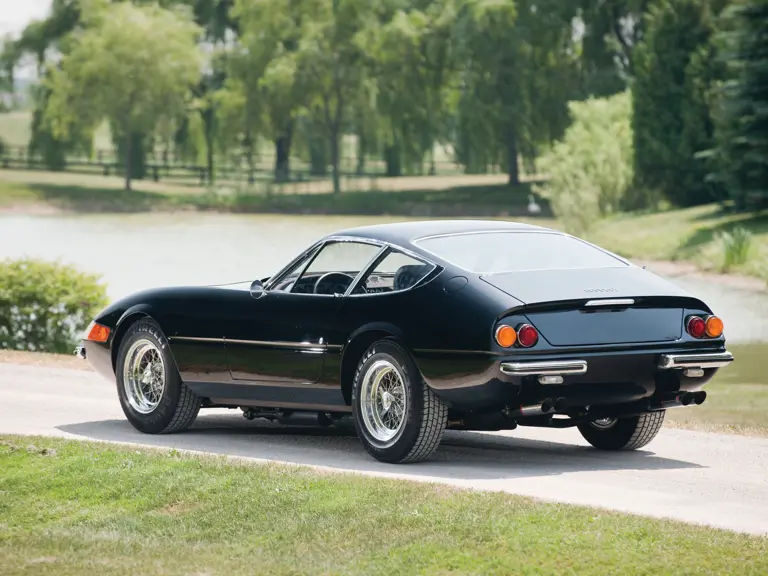
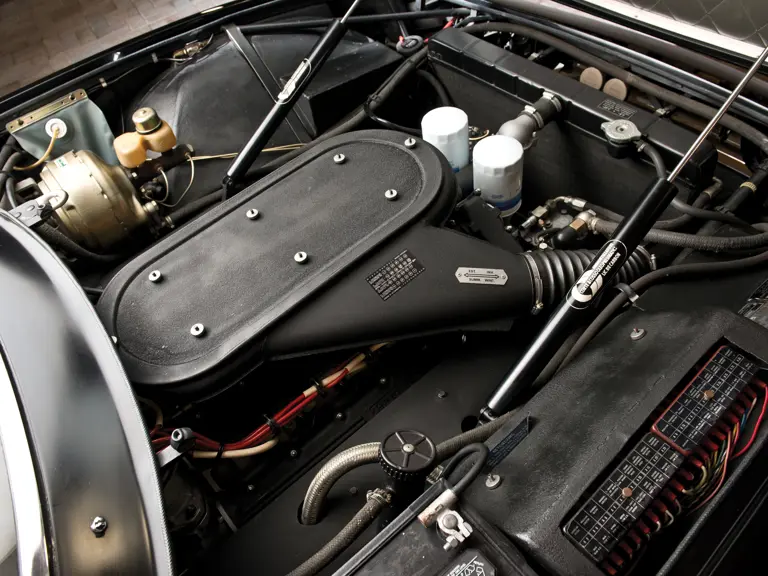
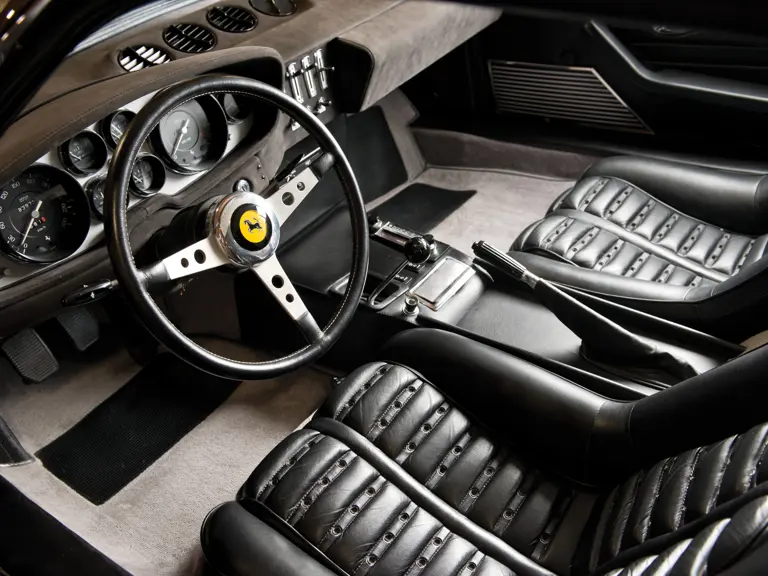

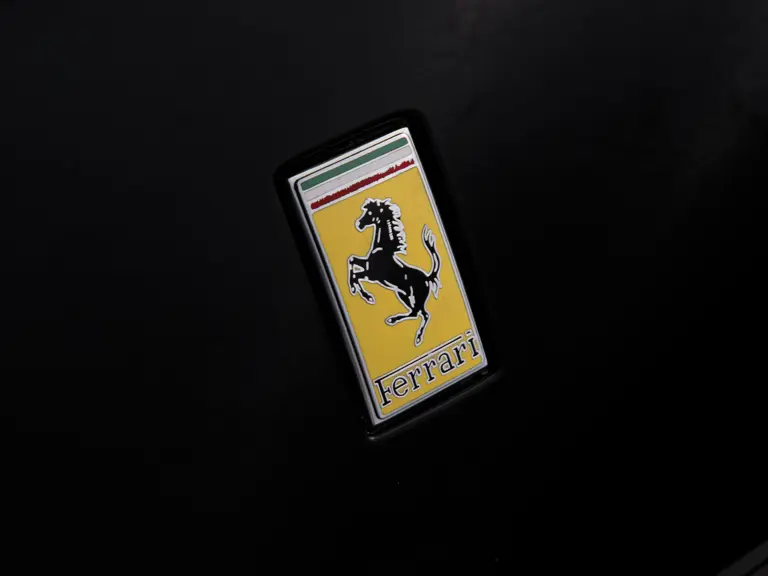
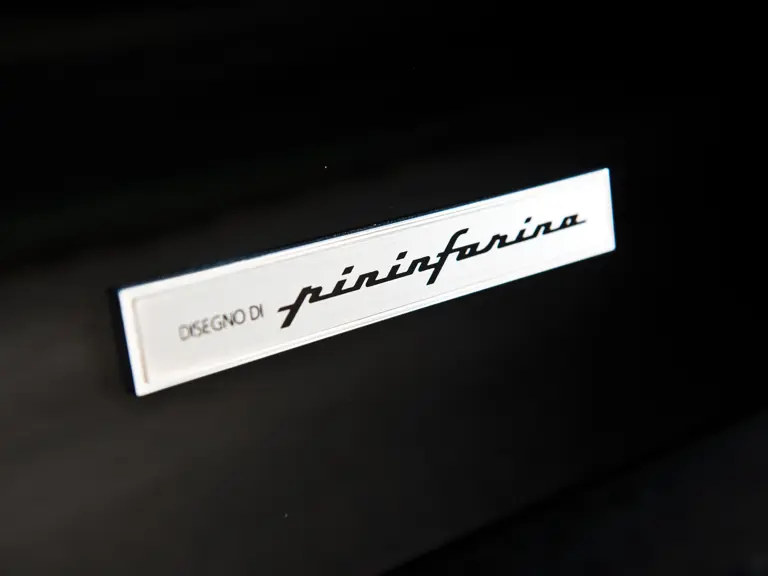
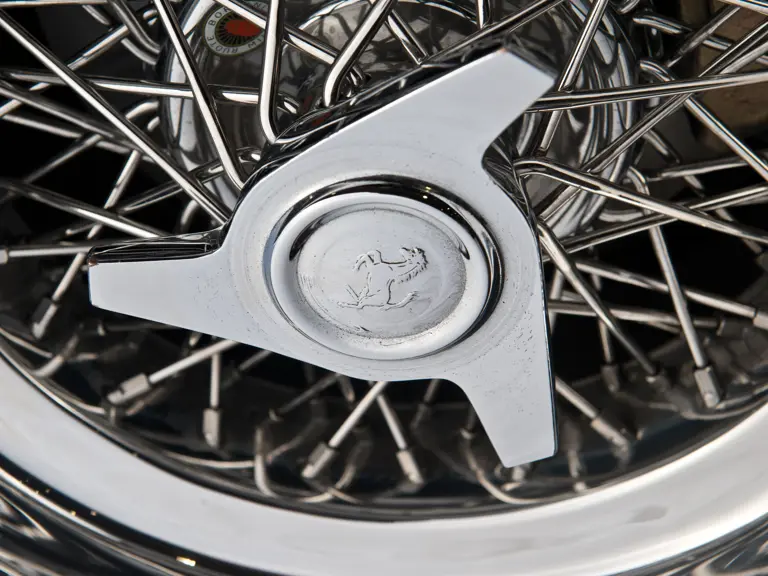
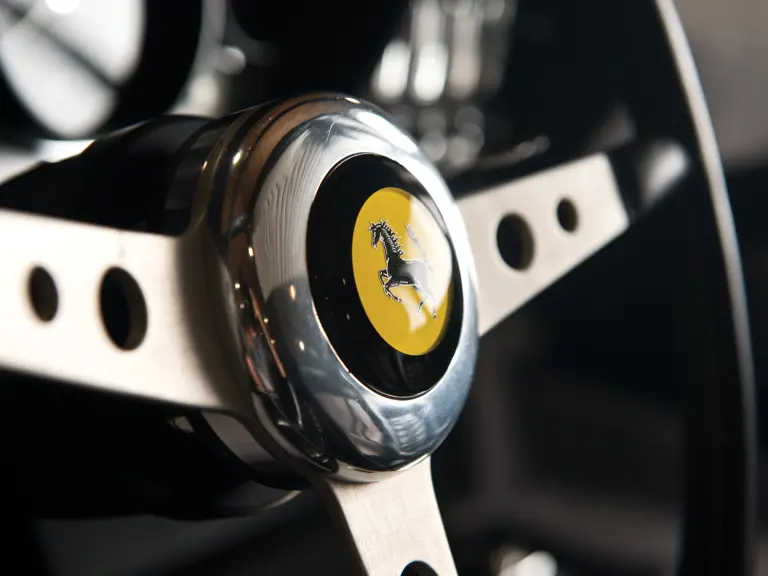
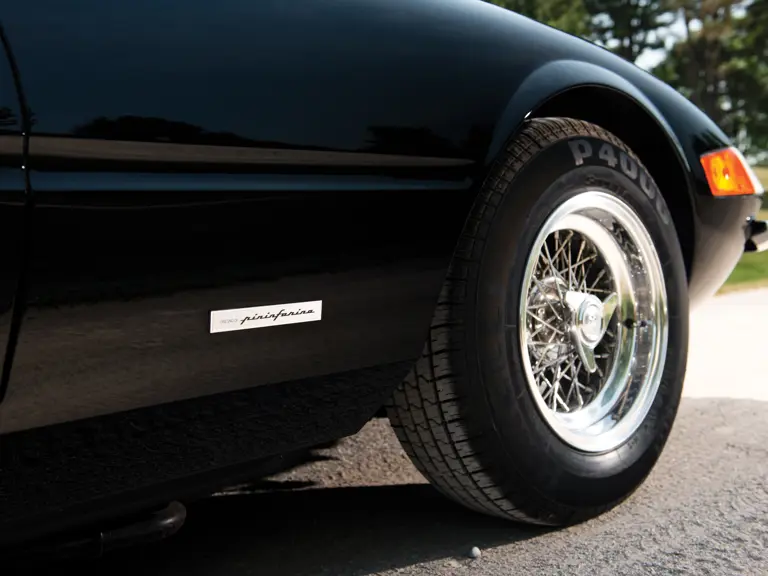


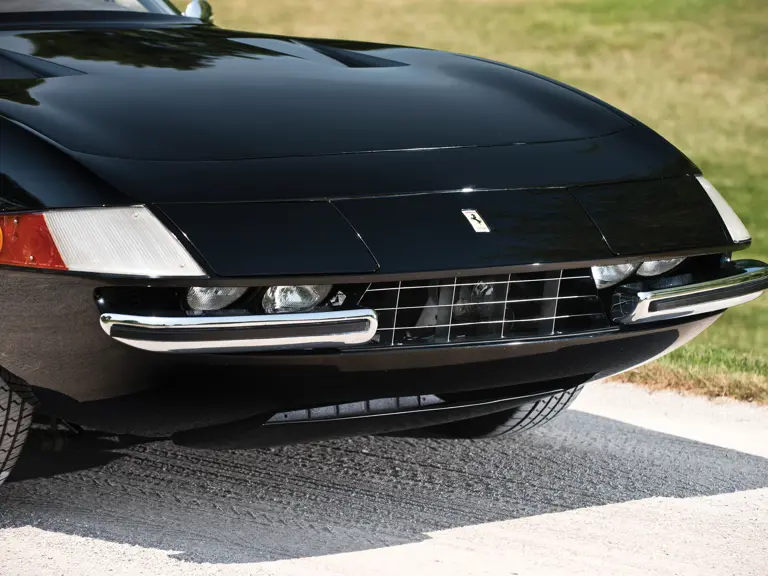
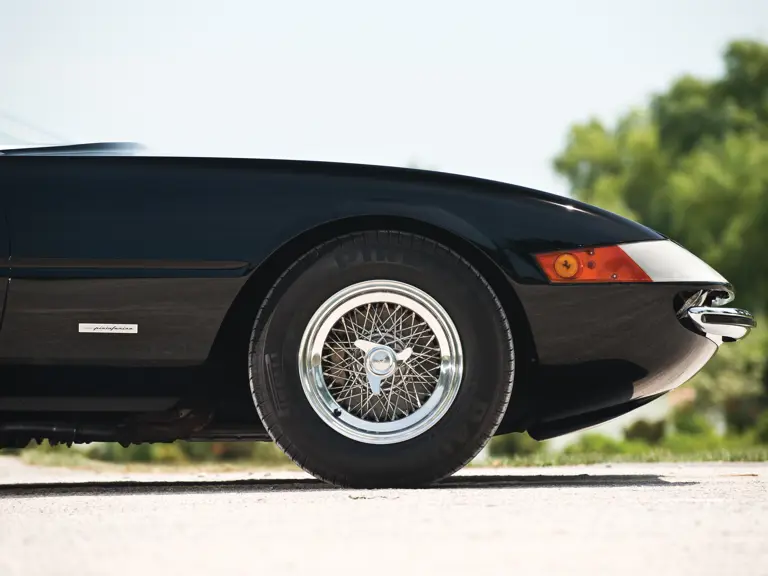
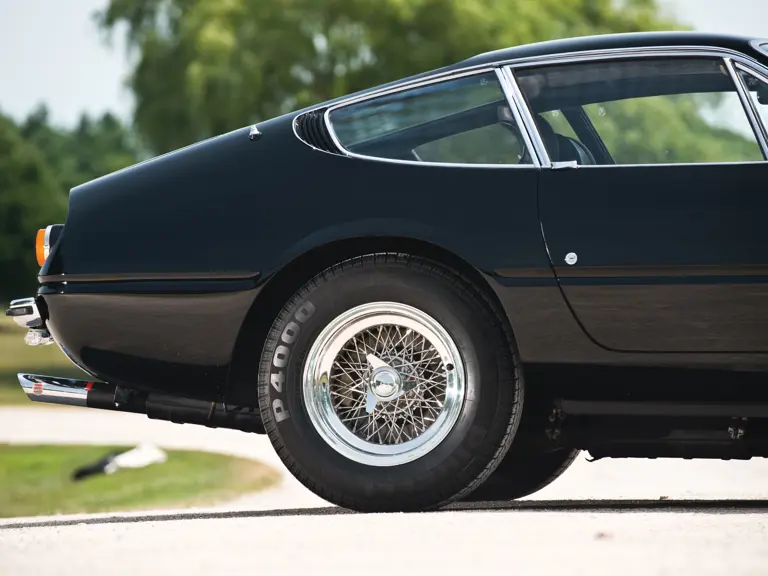
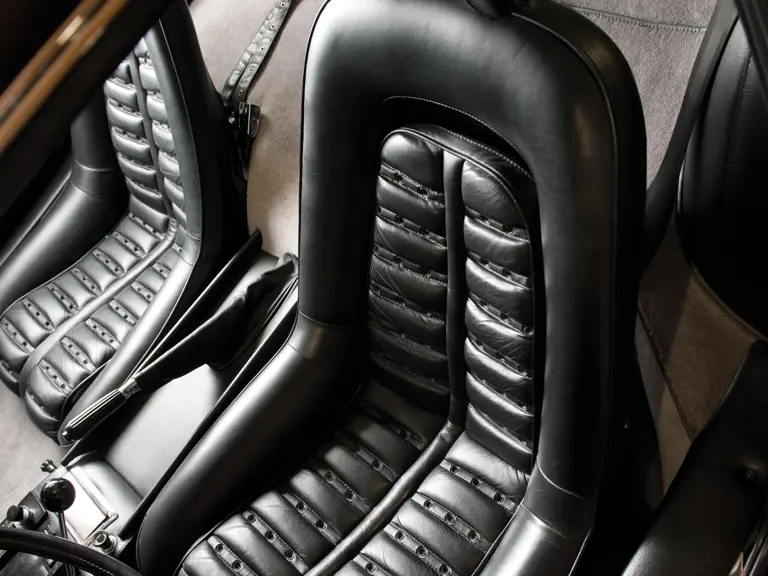
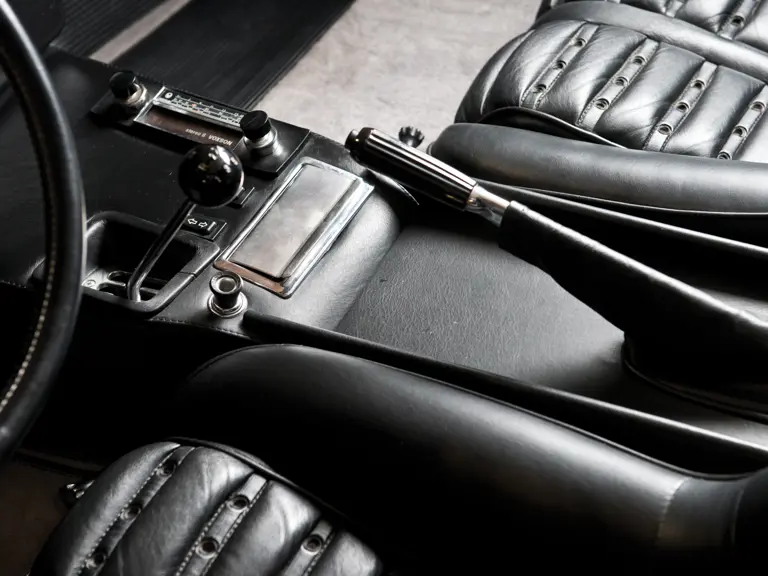

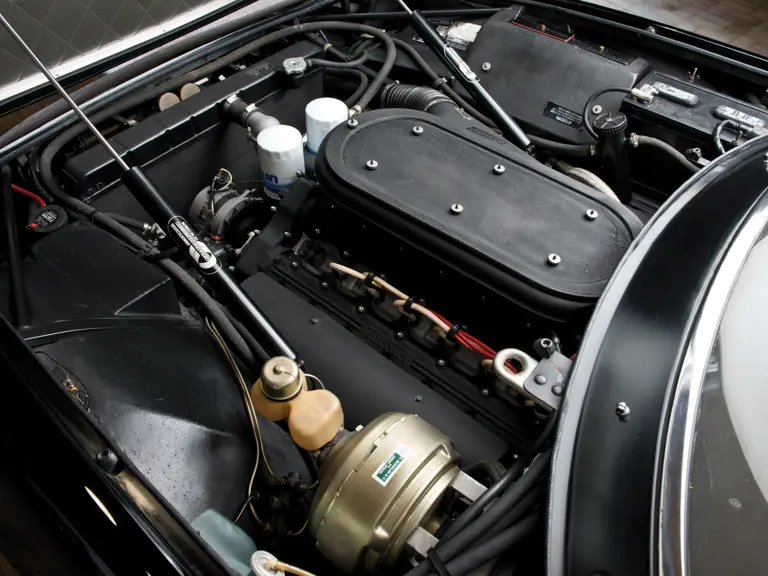
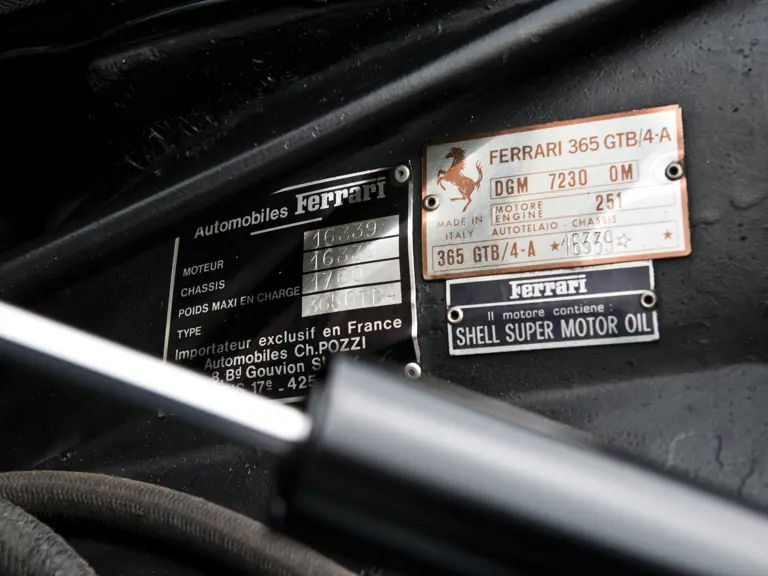
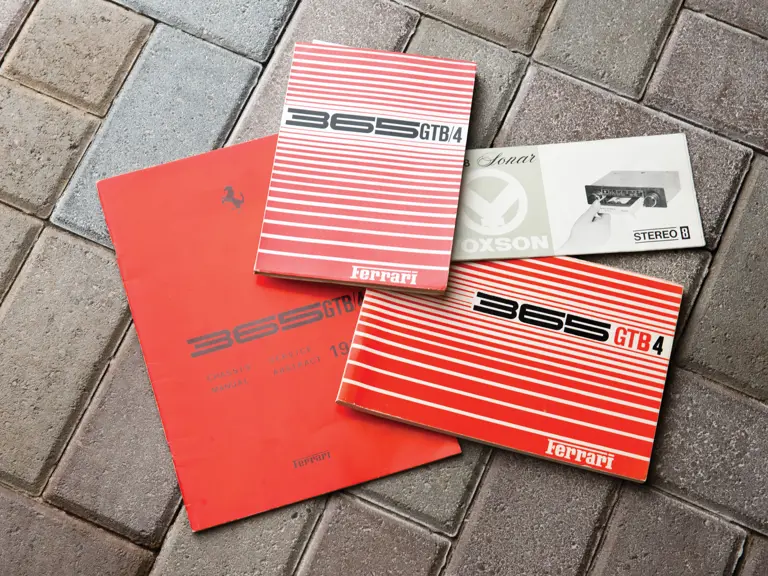

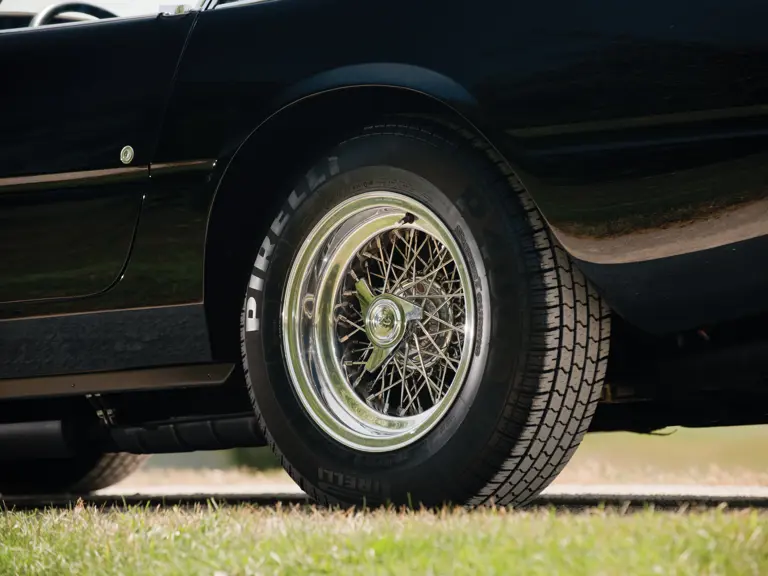

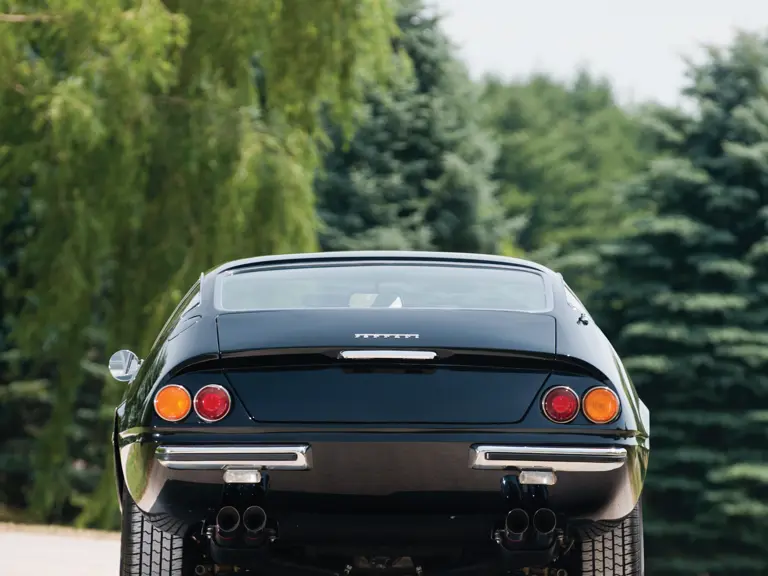
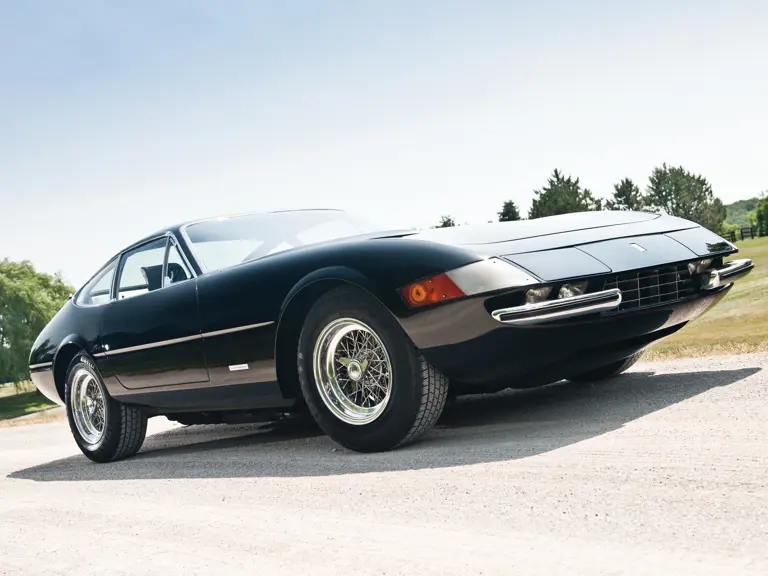
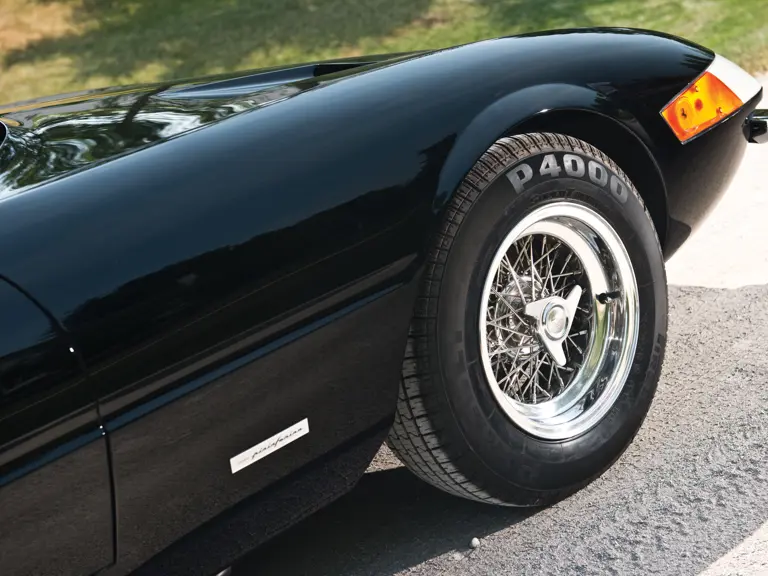

 | Monterey, California
| Monterey, California
